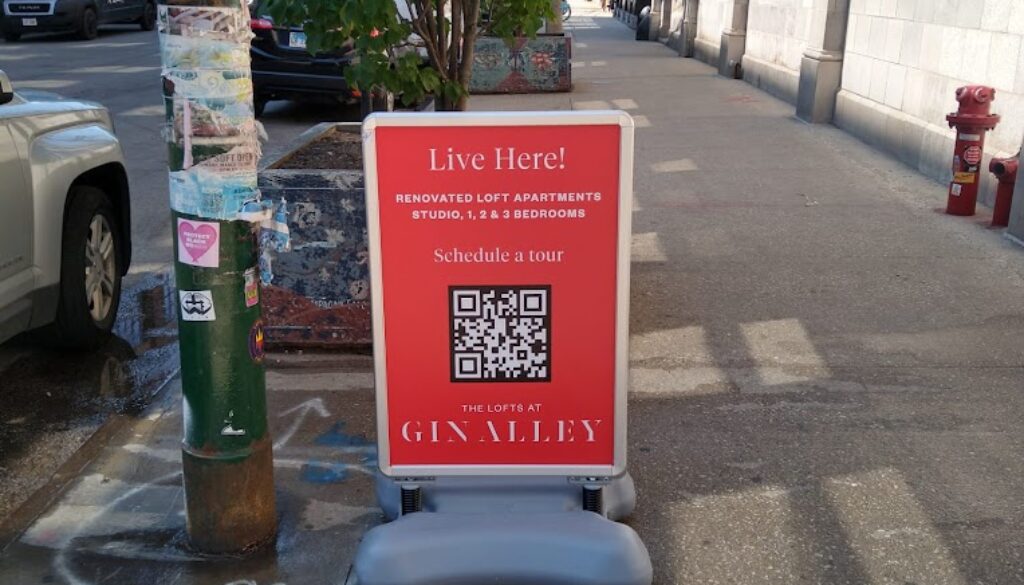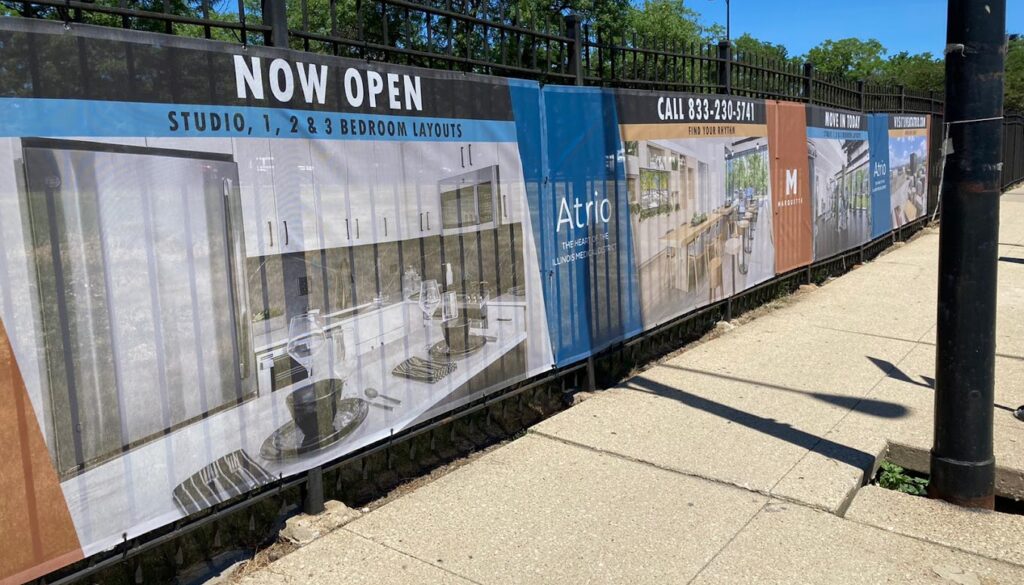Using signs can help create a strong and cohesive image for a business. Print signage, such as posters, banners, and brochures, is a cost-effective way to communicate with customers and convey important information. In contrast, digital signage can offer the same brand messaging but with a different price tag. Let’s explore each option to determine the best fit for your business goals and budget.
What is Digital Signage?
Digital signage typically uses LED or LCD screens to display digital content such as images, videos, and multimedia. Displays can connect to a centralized management system, which allows for remote control and updating of the content displayed. Digital signage gets used for advertising, promotional or informational purposes in public spaces like retail stores, airports, or public transportation.
What is Print Signage?
Print signage is a traditional form of advertising and information distribution created by printing designs or messages onto physical materials such as paper, cardboard, vinyl, corrugated plastic, or other substrates. You can find these signs in public spaces, such as store windows, billboards, or events. Print signage does not require electricity or electronic components, so it’s a low-maintenance option for advertising and promotion. It can be produced in various sizes and formats and convey as much information as digital signs.
The Advantages of Using Digital Signage
Using digital signage gives you advantages such as dynamic and attention-grabbing content, affordability, quick updates, increased interaction, and the capability to reach specific groups of people.
- Increased Engagement and Interactivity: Digital signage can grab the audience’s attention with dynamic visuals and interactive content.
- Customizable and Updatable: Digital signage can be easily updated and customized in real-time, allowing quick changes to be made to content as needed.
- Increased Reach: Digital signage can attract more people, especially in busy shopping centers, airports, or transportation hubs.
- Cost-Effective: In the long run, digital signage can be more cost-effective than traditional forms of advertising, as it eliminates the need for printing costs and offers more flexibility.
The Drawbacks of Using Digital Signage
Digital signage tends to be more expensive, and someone has to keep it going and troubleshoot the sign if there is a problem.
- High Initial Costs: The cost of digital signage systems gets high, especially if you want to implement a large-scale solution.
- Technical Complexity: Setting up and maintaining digital signage can be technically complex and require specialized knowledge.
- Fragile Hardware: Digital signage hardware, such as displays and media players, can be fragile and susceptible to damage.
- Limited Audience Targeting: It can be challenging to target specific demographics with digital signage as it is usually placed in public areas and seen by many people.
The Advantages of Using Print Signage
You can get printed signage for the front of a store, for billboards, for a road sign, for areas inside the store, etc., without busting the marketing budget.
- Cost-effective: Print signage is often a more cost-effective option for short-term advertising campaigns or events, as it does not require investment in electronic hardware or technical maintenance.
- Durability: Print signage materials, such as vinyl or cardboard, are generally more durable and weather-resistant than electronic displays, making them suitable for outdoor use. There are ways to maintain your print signage when not in use.
- Easy to Produce: Print signage can be made quickly and easily and does not require specialized technical knowledge or equipment.
- Customizable: Print signage can be customized to meet specific needs and requirements, such as size, shape, and design.
- Wide Reach: Print signage can be displayed in various public spaces, such as store windows, billboards, or events, making it accessible to a broad audience.
The Drawbacks of Using Print Signage
The disadvantages of print signage include the need for physical updates, potential fading or damage over time, limitations in design and customization options, and higher upfront costs than digital signage.
- Design Limitations: Depending on the printing method and materials used, it may be difficult to produce certain types of effects or finishes, or to create signs that are highly interactive or dynamic.
- Updates: Updating or changing print signage requires new materials and printing, which can be costly and time-consuming.
- Installation: Print signage can be more difficult to install and maintain particularly if it is large or needs to be placed in a challenging location.
- Maintenance: Physical signs require regular maintenance and cleaning to maintain their appearance and visibility. If signage is not properly cared for or protected from environmental factors such as weather and normal wear and tear, it can fade overtime.
How to Choose the Right Type of Signage for Your Business
It’s crucial to weigh the advantages and drawbacks of digital and print signage to make an informed decision. But ultimately, the best option will depend on your business’s specific needs and goals.
Get the guidance you need by speaking with an industry professional. The knowledgeable team at Bishop Image Group will assist you in designing and determining the best signage solution for your needs. Don’t wait, reach out to us today to embark on your signage endeavor.





